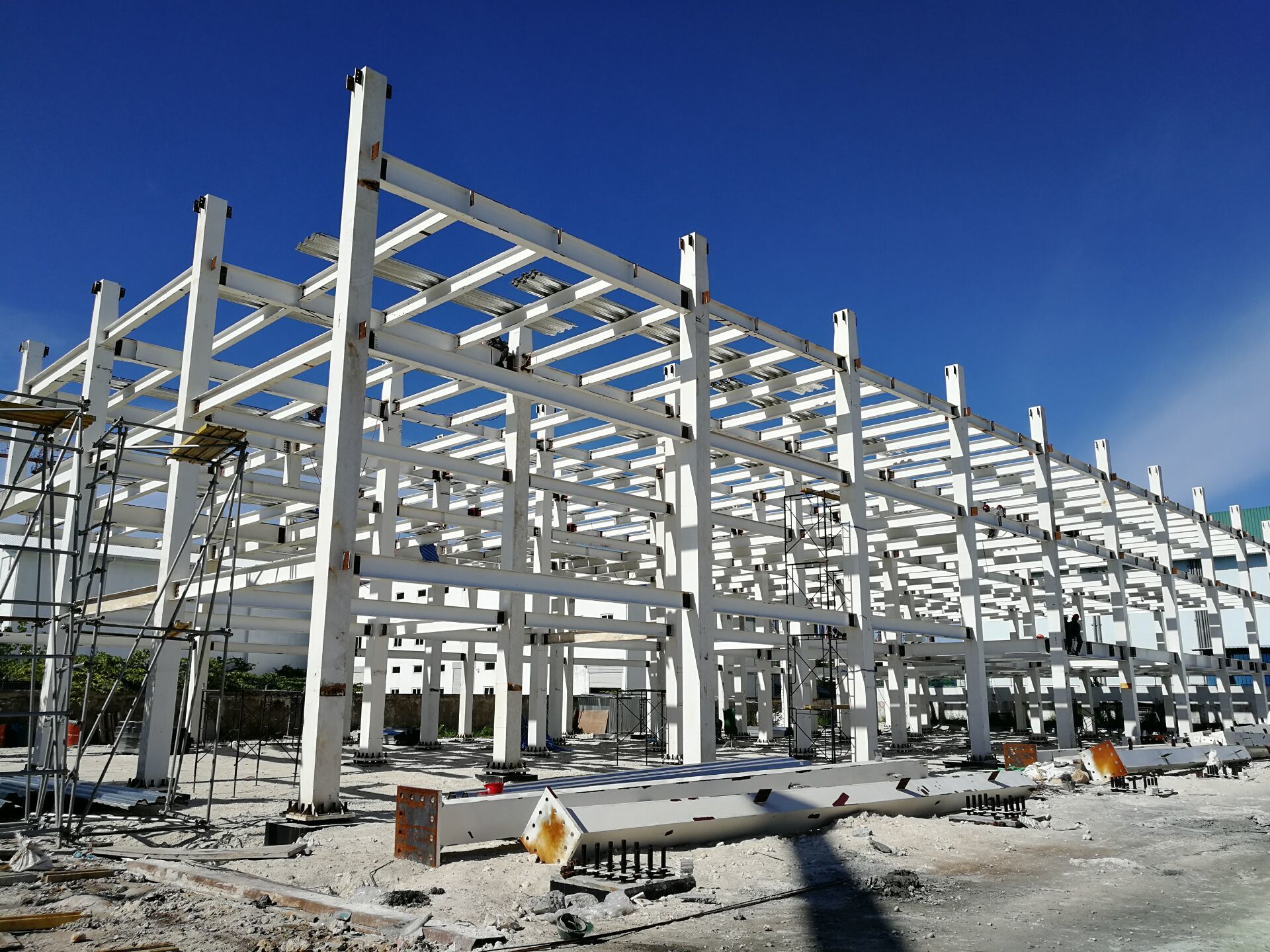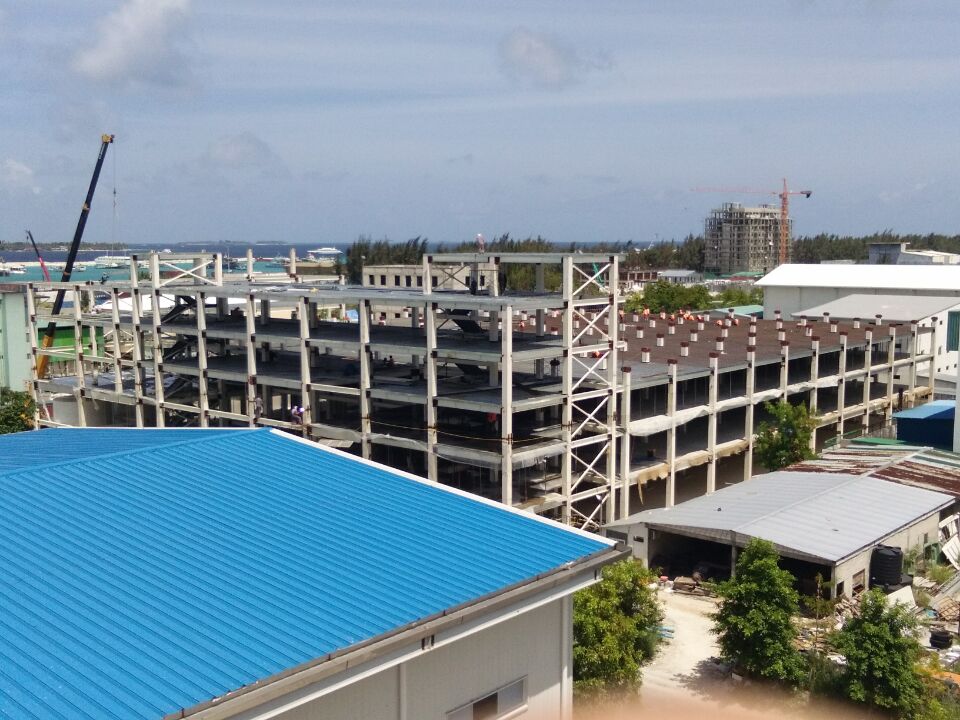Tel: 0086-532-88966982
0086-532-88965892
Website: www.lidajituan.com
E-mail: sales@lidajituan.com
Head office: 5th Floor, Building A, Darron Center, 180 Haier Road, Qingdao, 266000, China
Heavy Steel Structure Buildings: Engineering Marvels for Heavy-Duty Industrial Sites
Classification:Industry News
Release time:2025-05-21 13:00
Heavy Steel Structure Buildings: Engineering Marvels for Heavy-Duty Industrial Sites
Steel structure buildings have revolutionized modern construction, offering unparalleled durability, flexibility, and cost-efficiency. Among these, heavy steel structures stand out as engineering marvels, designed to withstand extreme conditions in industries like mining, oil & gas, and large-scale manufacturing. This article explores the unique advantages of heavy steel structures, contrasts them with light steel structures, and highlights their applications in warehouses, workshops, modular houses, and other critical constructions. With insights into companies like Lida Group—a leader in steel building solutions—we’ll uncover why heavy steel is the backbone of heavy-duty industrial sites.
1. Heavy vs. Light Steel Structures: A Technical Breakdown
While both light steel structure and heavy steel structure systems use steel as their primary material, their design philosophies and applications differ dramatically.
Heavy steel structures are engineered for resilience. Their thick steel plates and robust joints enable them to support massive loads, resist seismic forces, and endure harsh environments like those in mining or oil & gas facilities. In contrast, light steel structures prioritize speed and affordability, making them ideal for temporary housing, retail spaces, or smaller warehouses.
2. Applications of Heavy Steel Structures in Industrial Zones
From sprawling warehouses to modular mining camps, heavy steel structures are indispensable in heavy-duty sectors.
A. Mining Operations
Mining sites demand buildings that can survive remote locations, explosive atmospheres, and heavy machinery vibrations. Heavy steel structures provide:
- Blast-resistant designs for mineral processing plants.
- Corrosion-resistant coatings to combat acidic environments.
- Customizable layouts for conveyor systems or crusher houses.
For example, Lida Group delivered a 50,000 sqm steel structure complex for a copper mine in Chile, featuring reinforced foundations and fireproof insulation to meet stringent safety standards.
B. Oil & Gas Facilities
Oil refineries and gas processing plants rely on heavy steel frameworks for:
- High-temperature resistance (up to 600°C) in distillation columns.
- Explosion-proof compartments for hazardous material storage.
- Modular designs that allow rapid expansion.
A 2023 project in Saudi Arabia utilized prefabricated heavy steel modules to reduce on-site construction time by 40%, a critical factor in time-sensitive oil & gas projects.
C. Mega-Warehouses and Workshops
Heavy steel warehouses and workshops cater to industries requiring vast, column-free spaces:
- Aircraft hangars with spans exceeding 100 meters.
- Automotive assembly plants integrating robotic systems.
- Cold storage facilities with insulated steel walls.

3. The Role of Modularity in Heavy Steel Construction
Modular construction techniques are bridging the gap between light steel structures (known for speed) and heavy steel structures (prized for strength). Companies like Lida Group now offer hybrid solutions:
- Prefabricated heavy steel components assembled on-site for precision.
- Modular camps for mining or oil & gas workers, blending durability with mobility.
- Expandable workshops where steel frameworks can be extended as operational needs grow.
A case study in Canada’s Alberta oil sands demonstrated how a modular heavy steel workshop reduced downtime by 60% compared to traditional builds.
4. Sustainability and Cost Efficiency
Heavy steel structures are not just strong—they’re also sustainable. Recycled steel accounts for 93% of material use in modern projects, and their longevity (50+ years) minimizes replacement cycles. Additionally, advanced coatings reduce maintenance costs by 30% in corrosive environments like coastal oil rigs.
5. Lida Group: Pioneering Heavy Steel Solutions
As a global leader, Lida Group has engineered groundbreaking projects such as:
- A 120-meter-span steel warehouse in Dubai, capable of storing 200,000 tons of cargo.
- Modular housing units for a mining camp in Australia, built with hybrid light/heavy steel for portability and storm resistance.
- Custom workshops for automotive giants, featuring overhead cranes and vibration-dampening floors.

6. The Future of Heavy Steel Structures
Emerging trends include:
- AI-driven design tools optimizing steel usage by 15–20%.
- 3D-printed steel joints for complex geometries.
- Smart sensors embedded in structures to monitor stress and corrosion in real time.
Conclusion
Heavy steel structure buildings are the unsung heroes of industrial progress, enabling safer, stronger, and smarter facilities for mining, oil & gas, and manufacturing. By leveraging innovations from firms like Lida Group, industries worldwide are adopting steel solutions that balance modularity, sustainability, and brute strength. Whether it’s a hurricane-proof oil refinery or a modular mining camp, heavy steel structures prove that engineering excellence can conquer even the toughest challenges.
heavy steel structure,constructions,steel structure building,warehouse
Contact Us
Head Office: 5th Floor,Building A,Darron Center,No.180,Haier Road,Qingdao, 266000,China
Tel: 0086-532-88966982 88965892 Fax:0086-532-88965571
WhatsApp:+86 13793209022
Mobile/Wechat:+86-15166671720
Email: sales@lidajituan.com Website: www.lidajituan.com
Alternate Website: www.lidamodularhouse.com
Head Office: 5th Floor,Building A,Darron Center,No.180,Haier
Road,Qingdao, 266000,China
Tel: 0086-532-88966982 88965892
Fax:0086-532-88965571
Email: sales@lidajituan.com
Website: www.lidajituan.com
Alternate Websit: www.prefabhousecn.com
Wechat/WhatsApp:+86-13793209022
Copyright(c)2023 All Rights Reserved SEO Business license

